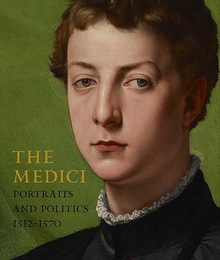The Intellectual Life of the Early Renaissance Artist
WARNING
You are viewing an older version of the Yalebooks website. Please visit out new website with more updated information and a better user experience: https://www.yalebooks.com
Francis Ames-Lewis

Read this book online via the A&AePortal, our art and architectural history eBook platform. To learn more about how to access this book, please contact us.
Out of Print
At the beginning of the fifteenth century, painters and sculptors were seldom regarded as more than artisans and craftsmen, but within little more than a hundred years they had risen to the status of “artist.” This book explores how early Renaissance artists gained recognition for the intellectual foundations of their activities and achieved artistic autonomy from enlightened patrons. A leading authority on Renaissance art, Francis Ames-Lewis traces the ways in which the social and intellectual concerns of painters and sculptors brought about the acceptance of their work as a liberal art, alongside other arts like poetry. He charts the development of the idea of the artist as a creative genius with a distinct identity and individuality.
Ames-Lewis examines the various ways that Renaissance artists like Mantegna, Leonardo da Vinci, Raphael, and Dürer, as well as many other less well known painters and sculptors, pressed for intellectual independence. By writing treatises, biographies, poetry, and other literary works, by seeking contacts with humanists and literary men, and by investigating the arts of the classical past, Renaissance artists honed their social graces and broadened their intellectual horizons. They also experienced a growing creative confidence and self-awareness that was expressed in novel self-portraits, works created solely to demonstrate pictorial skills, and monuments to commemorate themselves after death.
Ames-Lewis examines the various ways that Renaissance artists like Mantegna, Leonardo da Vinci, Raphael, and Dürer, as well as many other less well known painters and sculptors, pressed for intellectual independence. By writing treatises, biographies, poetry, and other literary works, by seeking contacts with humanists and literary men, and by investigating the arts of the classical past, Renaissance artists honed their social graces and broadened their intellectual horizons. They also experienced a growing creative confidence and self-awareness that was expressed in novel self-portraits, works created solely to demonstrate pictorial skills, and monuments to commemorate themselves after death.
Published with the assistance of the Getty Grant Program
Francis Ames-Lewis is professor of history of Renaissance art at Birkbeck College, University of London. He is the author of Drawing in Early Renaissance Italy, published by Yale University Press.
ISBN: 9780300083040
Publication Date: April 10, 2000
Publishing Partner: Published with the assistance of the Getty Grant Program
Publication Date: April 10, 2000
Publishing Partner: Published with the assistance of the Getty Grant Program
332 pages, 6 1/8 x 9 1/4
100 b/w + 50 color illus.
100 b/w + 50 color illus.









